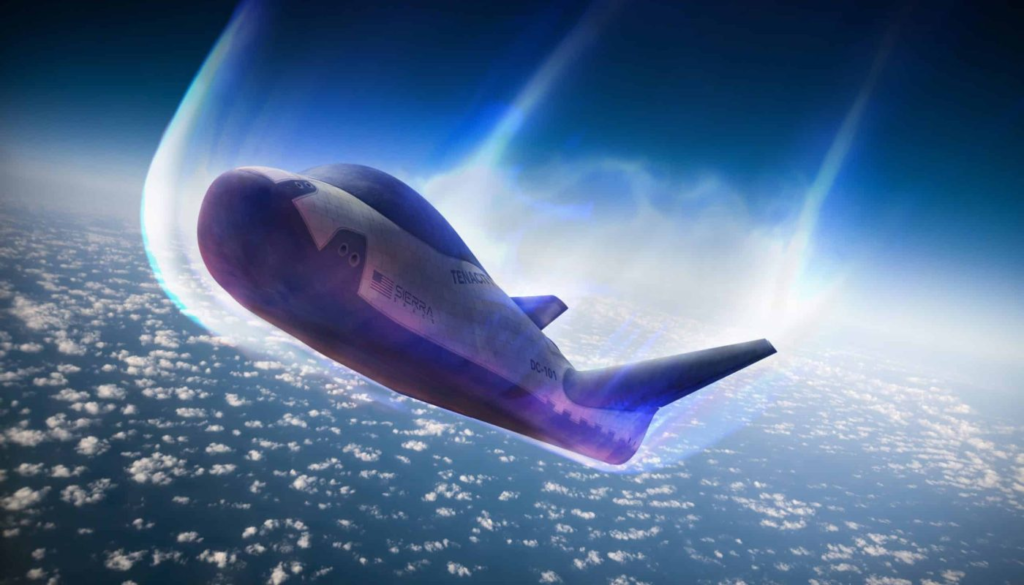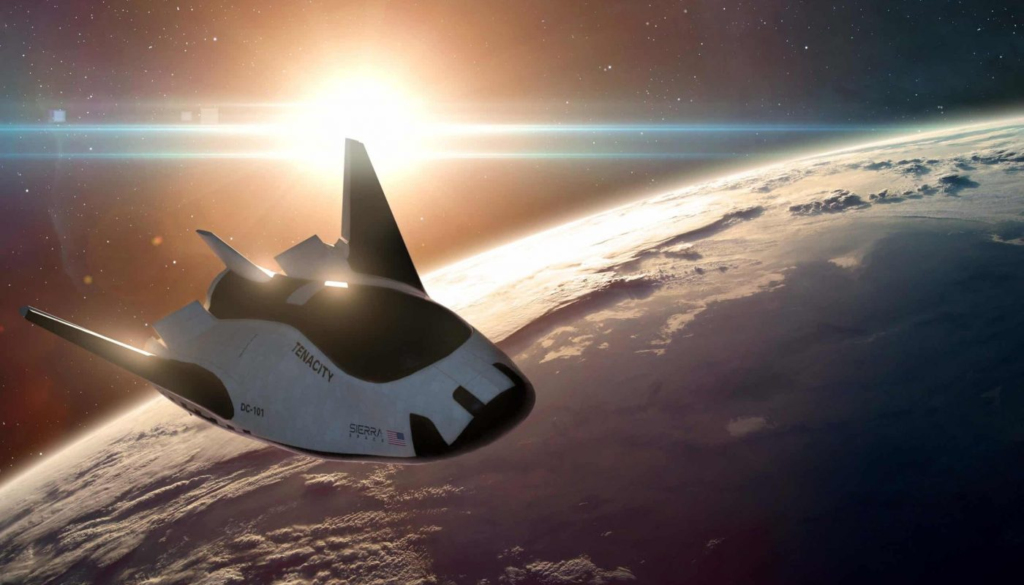
How Dream Chaser Improves On The Space Shuttle’s Design
It has been a long time since we have seen a spaceplane capable of reaching orbit and returning for a runway landing. Decades ago, the Space Shuttle was both a major success and failure. A piece of hardware responsible for over 100 successful missions but also the death of 14 astronauts. Now in 2023, Sierra Space is preparing to launch its first Dream Chaser test article to the International Space Station.
As they designed and manufactured this modern spaceplane, the company took into consideration the pros and the cons of the Shuttle. This has created a new type of spacecraft with some major similarities and differences to the past shuttle. It’s also important to point out that the current Dream Chaser variant also has a different mission goal than the Space Shuttle contributing to various differences.
Either way, they’re both very unique pieces of hardware and could become a popular mode of transportation in the near future. Here I will go more in-depth into how Dream Chaser compares to the Shuttle, why Sierra Space has made certain changes, the upcoming launch, and more.
Design & Launch

More than a decade ago today, on July 21, 2011, the last space shuttle mission landed at the legendary facility in the heart of Florida’s “Space Coast.” As Atlantis landed for the final time so too concluded the chapter in NASA’s 30-year shuttle program. The historic runway at Kennedy Space Center has remained largely quiet since – for too long – as humanity lost the ability to return from space with a low-G runway landing and we bid farewell to an icon of spaceflight. This however is set to change relatively soon.
In a statement, Sierra Space said, “The Dream Chaser is the first-ever winged commercial spaceplane, and although it looks somewhat like NASA’s space shuttle, it’s something entirely new. It’s also unlike Boeing’s X-37b, which exclusively conducts military missions, in that it will open shared access to space and international collaboration for all humankind” they said.
In terms of design, NASA’s original space shuttle had a wing design much like an airplane. Instead of being independent and perched atop a rocket, it was integrated with an external fuel tank that provided fuel for its main engines and had two solid rocket boosters attached at the sides. Each space shuttle was designed to fly at least 100 missions – but they actually flew fewer than that. The first model of the DC-100 cargo variant Dream Chaser is named Tenacity. Tenacity at 30 feet (9 meters) long, is roughly a quarter of the total length of the space shuttle orbiters – though the habitable volume is about half the space shuttle.
The shuttle was 67 cubic meters (not including the airlock), and Tenacity’s pressurized volume is 33 cubic meters (including both the spaceplane and the cargo module). This makes the spaceplane more sustainable and easier to maneuver, but it also assists with gentle 1 g runway landings – ideal for fragile cargo. Dream Chaser, Tenacity, was originally designed as a crewed spaceplane, partially under NASA’s Commercial Crew Program, before being awarded a NASA Commercial Resupply Services 2 contract. Under this contract, the Dream Chaser spaceplane fleet (including Tenacity), will provide a minimum of seven uncrewed cargo service missions to and from the International Space Station (ISS) and will be designed with high reusability in mind.
As for lift-off, Space shuttles were launched vertically on a launch pad, utilizing solid rocket boosters (SRBs) and main engines. Thus, shuttles needed 7.8 million pounds of thrust to reach orbit. The SRBs collectively provided 6.6 million pounds of thrust on top of the main shuttle engines, which added a total of 1.2 million pounds of thrust. The SRBs were jettisoned just after two minutes into the flight and the main engine cutoff would happen around eight minutes into the flight.
In comparison, Tenacity is compatible with a wide variety of launch vehicles (rockets) and will be launched in a stowed configuration inside a payload fairing. This makes Tenacity significantly more flexible and reduces ascent loads on the vehicle compared to the space shuttle. With Tenacity in a payload fairing, it will sit on top of the rocket which will help protect the vehicle from debris. Sierra Space’s DC-200 crewed spaceplane variant will be launched in a similar configuration but without a fairing, which will still offer protection from debris since the rocket will be located below the vehicle.
Reentry & Payload

The next difference, has to do with the reentry process. Back in the day, space shuttles executed controlled reentries into Earth’s atmosphere, entering nose-first at a high angle of attack to generate aerodynamic lift. Apollo astronauts were subjected to forces between 3-7 g’s though the shuttle missions saw less than 2 g’s on reentry. As mentioned earlier, the Tenacity can return critical cargo to Earth at less than 1 g, contributing to a gentle and safe landing for the craft and its potential crew.
Sierra Space was also quoted saying, “Of course, great leaps in tech don’t always happen smoothly. Tenacity conquered tremendous challenges in its development, including early flight failures” they said. Another big issue was figuring out how to demonstrate the spaceplane’s unique lifting body design ability to return to Earth with a smooth, low-G re-entry. In 2017, Sierra Space conducted a pivotal test flight. NASA and other stakeholders needed to see that these capabilities were possible outside of computer simulations – so the Sierra Space team tested the hardware during a real, autonomously conducted atmospheric flight.
During the test, the spaceplane entered a 70-degree dive, quickly gaining airspeed to intercept its flight path for a normal Earth return. It performed well, autonomously deploying its landing gear, flaring, and touching down safely on a runway.
Another big difference has to do with payload capacity and available space. Space shuttles had large payload bays that could carry a variety of cargo, including military and defense satellites, scientific instruments, and even entire space station modules. These payloads weighed up to 27,500 kilograms (60,600 pounds) in low-Earth orbit missions. With the help of Sierra Space’s Shooting Star™ service module, the Tenacity spaceplane can deliver 5,500 kilograms (up to 12,000 pounds) of pressurized and unpressurized cargo to the space station before returning to Earth. Thanks to its internally developed thrusters with three different thrust modes, it can also maneuver in space and ensure deliveries are effectively completed.
Although this payload is smaller, the spaceplane is highly customizable for a range of applications. The Tenacity is a multi-mission vehicle that can provide faster turnarounds and handle more lifetime loads. Three separate NASA astronaut crews have visited the Sierra Space facilities to train on loading and unloading cargo in anticipation of Dream Chaser deliveries to the ISS.
Specifically, months ago in March, Sierra Space hosted its first-ever Dream Chaser astronaut training for two members from the upcoming SpaceX Crew-7 mission to the International Space Station (ISS). Crew-7 might be the team onboard the ISS when Dream Chaser berths with the station for the first time. The Senior Systems Engineer gave a full overview of Dream Chaser, covering topics such as systems identification and function, mission profiles, crew interfaces and operations. By the end, the astronauts walked away with a full understanding of the hardware they will encounter on Dream Chaser once it berths with the ISS.
After a morning on the production floor, the astronauts spent the bulk of the day in a full-size mock-up of Dream Chaser undergoing hatch and cargo module training. The astronauts worked to identify all the hardware and systems, learning how to operate and/or interface with each one. The astronauts also learned how to enter and exit the vehicle and discussed off-nominal scenarios. During the final portion of training, the astronauts learned how to properly and safely install/remove cargo from Dream Chaser, using the same procedures and operational tools as they will on orbit. They practiced with numerous restraints (i.e., straps, beams, etc.), identified hazards associated with cargo operations, and ran scenario drills.
Uniquely, Sierra Space has its own astronaut Training Academy, preparing the next generation of astronauts. Their program combines the practices of legacy astronaut training with the agility and focus of a commercial spaceflight company. All three categories of future astronauts (career, specialist, and experiential) receive specific training for their roles. Whether they’ll be delivering payloads, helping with on-orbit experiments, or living and working in space, the academy will prepare them for what space holds. As Dream Chaser gets closer to its first orbital mission, Sierra Space is continuing to prepare for a busy future. This includes a lot of work with crew and eventually a crewed Dream Chaser. However, before this, the uncrewed variant needs to lift off and have a few successful missions under its belt. Something we can expect to see toward the end of this year.
Conclusion
Dream Chaser has a lot of similarities and differences to the Space Shuttle. When developing this spaceplane, Sierra Space took into consideration what worked well and what didn’t on the shuttle. We will have to wait and see how it progresses and the impact it has on the space industry.
